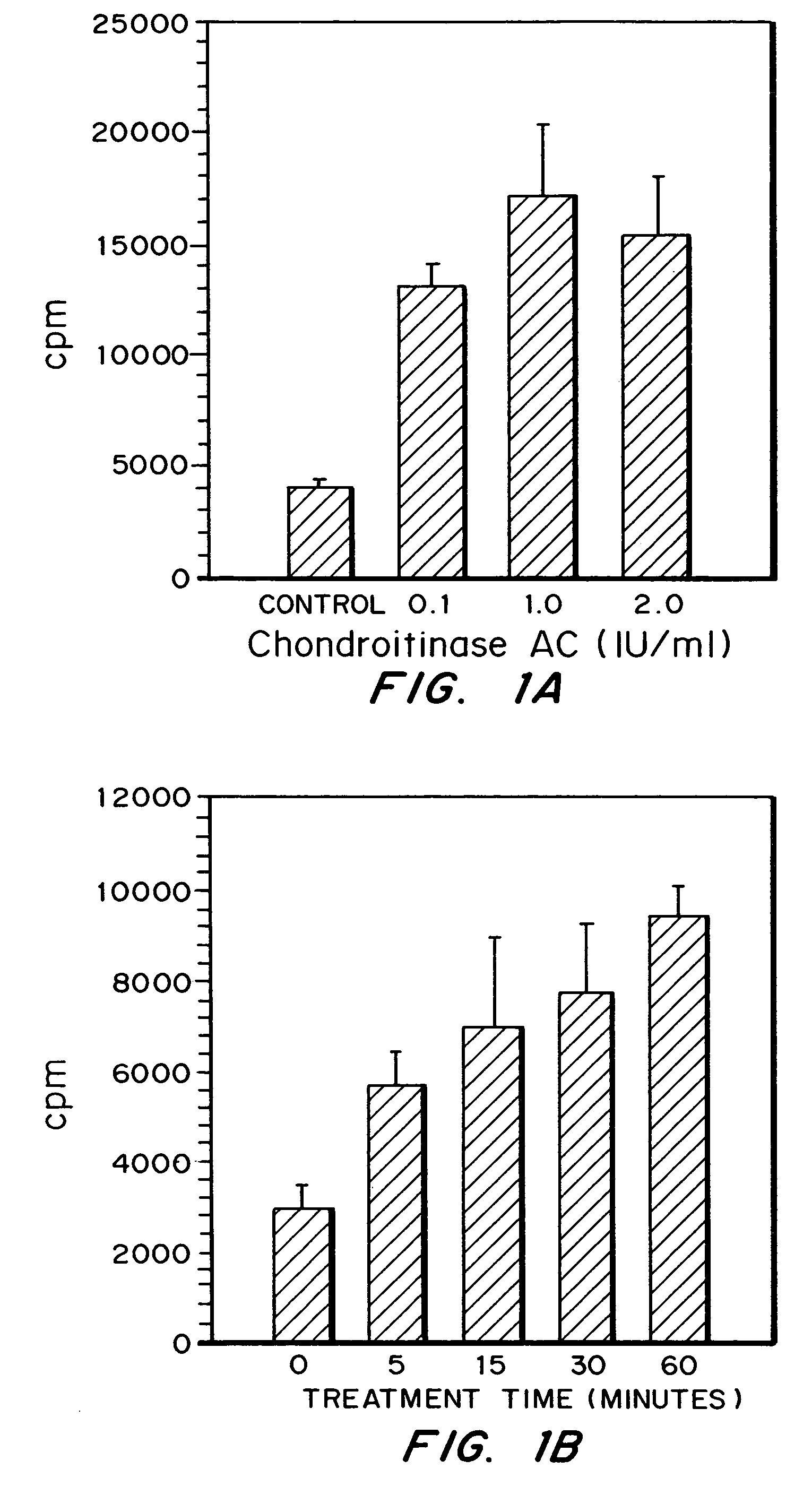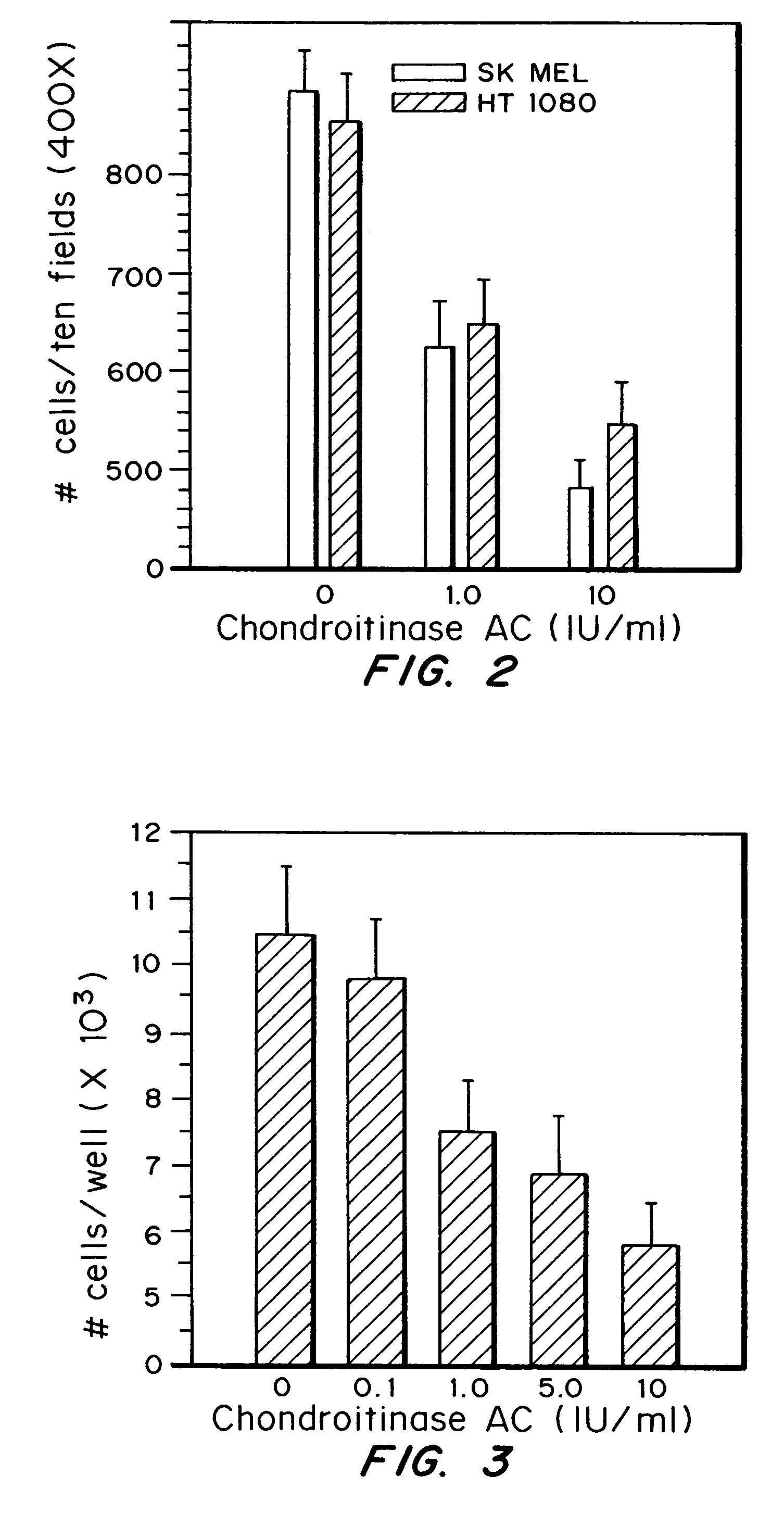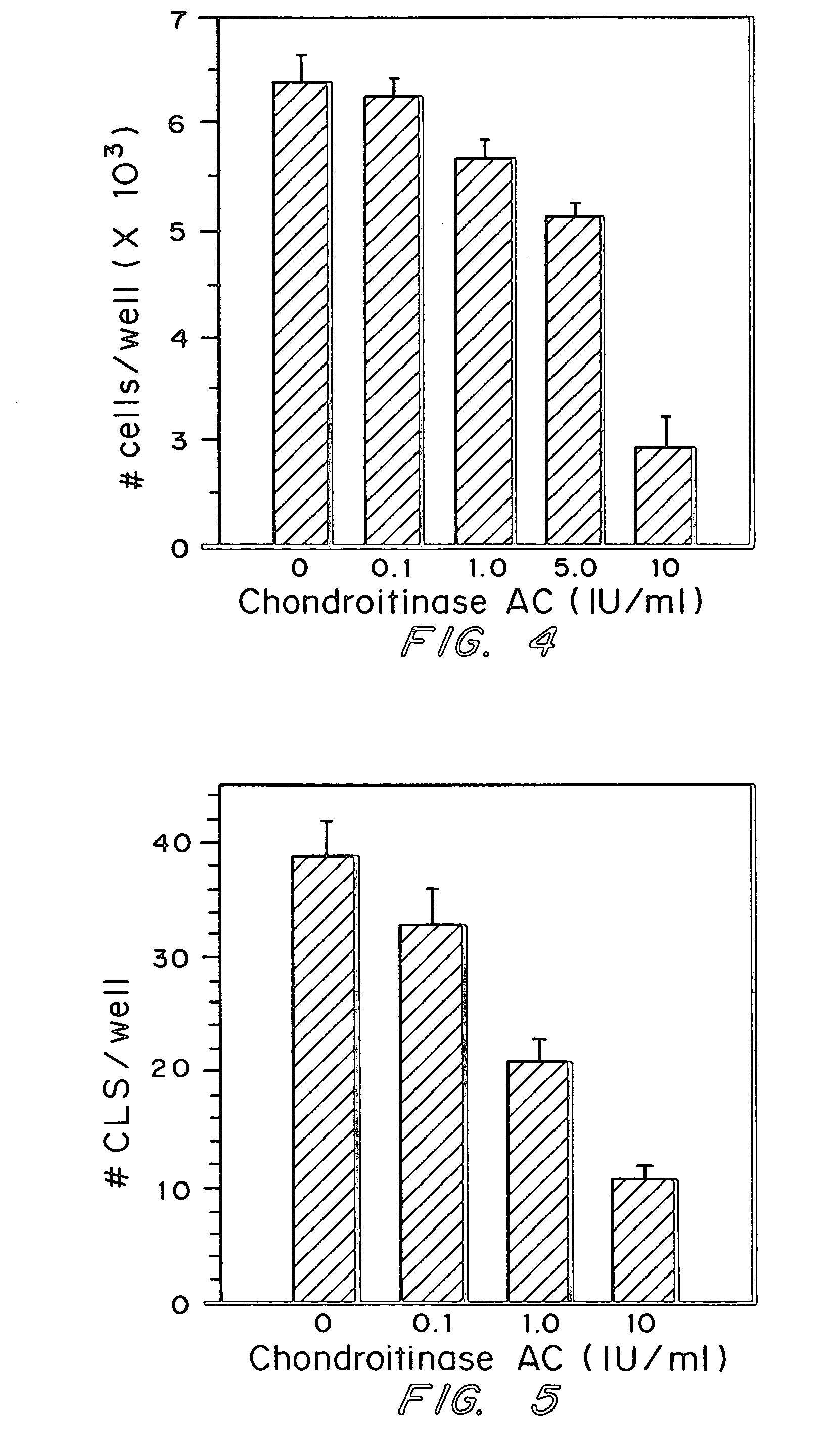Attenuation of tumor growth, metastasis and angiogenesis
a tumor and metastasis technology, applied in the field of tumor growth attenuation, metastasis and angiogenesis, can solve the problems of reducing the ability of tumor cells to invade the bloodstream, reducing the potential for tumor growth, etc., to prevent the formation of metastatic tumors, reduce tumor growth potential, and reduce tumor growth potential
- Summary
- Abstract
- Description
- Claims
- Application Information
AI Technical Summary
Benefits of technology
Problems solved by technology
Method used
Image
Examples
example 1
[0048]Chondroitinase B (no EC number) and chondroitinase AC (EC 4.2.2.5) are native enzymes of Flavobacterium heparinum and can also be recombinantly expressed in this same bacterium (Gu et. al., Biochem. J. 312:569–577 (1995)). Specific activity and substrate specificity were determined for each enzyme, using a kinetic spectrophotometric assay, performed essentially as described by Gu et al. (1995). In these assays, enzyme concentrations were 0.25 IU / ml and substrate concentrations were 0.5 mg / ml (chondroitin sulfate B and chondroitin sulfate AC) or 0.75 mg / ml (heparan sulfate). The specific activities of the enzymes were: 97 IU / mg for Chondroitinase B and 221 IU / mg for chondroitinase AC.
[0049]The substrate specificity of ultra-purified Chondroitinase B and AC were determined by testing the ability of the enzymes to degrade chondroitin sulfate B, chondroitin sulfate A, chondroitin sulfate C, and heparan sulfate. As shown in Table 1, both enzymes were act...
example 2
Removal of Glycosaminoglycans from Cells
[0052]The effectiveness of the chondroitinase AC in removing sulfated glycosaminoglycans from cells was examined using cells with glycosaminoglycans labeled by incubation with Na35SO4 (Dupont, NEN). Human melanoma cells (SK-MEL) were plated at a density of 6×104 cells / well in 24 well plates, in MEM with 10% serum and 25 mCi / ml of Na235SO4, and incubation continued for 2.5 days. The medium was removed and cells rinsed 2× with MEM then treated with Chondroitinase AC as indicated. Medium was removed and radioactivity determined. The release of sulfated glycosaminoglycans from cells by enzyme was expressed as cpm / well.
[0053]Cells were exposed to 0.1, 1.0 or 2.0 IU / ml of Chondroitinase AC, at 37 C. for 1 hour. As shown in FIG. 1A, maximal release of sulfated GAGs by chondroitinase AC was achieved with 1.0 IU / ml of enzyme. Further experiments were done in which SK cells were treated with 1.0 IU / ml of chondroitinase AC for 5 to 60 minutes. FIG. 1B il...
example 3
Effects on Tumor Cell Invasion
[0055]The effects of Chondroitinase AC on tumor cell invasion were assessed in an in vitro assay. Two human cell lines were used: SK-MEL-2, a melanoma and HT-1080, a fibrosarcoma, both obtained from the ATCC in Manassas, Va. Each cell line was grown to a density of approximately 4×105 cells / well, in MEM with 10% serum. Cells were rinsed with PBS, then treated with the indicated concentration of Chondroitinase AC in serum free medium for one hour at 37 C. Following enzyme treatment, cells were rinsed with serum free medium, removed from dishes by trypsinization and resuspended in medium containing 1% serum containing the indicated concentration of chondroitinase AC.
[0056]The invasion assay was performed in 8 mm pore polycarbonate filter cell culture inserts (Falcon, Franklin Lakes, N.J.). Insert filters were pre-coated with 25 μg of Matrigel (Collaborative Biochemicals, Cambridge, Mass.) in serum free medium. Coated filters were dried overnight and equil...
PUM
| Property | Measurement | Unit |
|---|---|---|
| concentrations | aaaaa | aaaaa |
| concentrations | aaaaa | aaaaa |
| concentrations | aaaaa | aaaaa |
Abstract
Description
Claims
Application Information
 Login to View More
Login to View More - R&D
- Intellectual Property
- Life Sciences
- Materials
- Tech Scout
- Unparalleled Data Quality
- Higher Quality Content
- 60% Fewer Hallucinations
Browse by: Latest US Patents, China's latest patents, Technical Efficacy Thesaurus, Application Domain, Technology Topic, Popular Technical Reports.
© 2025 PatSnap. All rights reserved.Legal|Privacy policy|Modern Slavery Act Transparency Statement|Sitemap|About US| Contact US: help@patsnap.com



